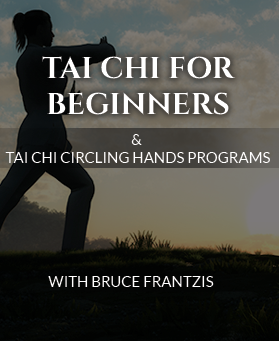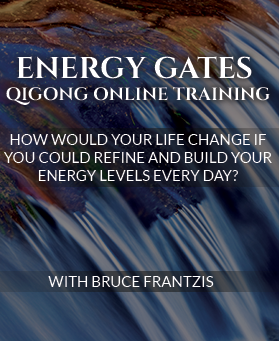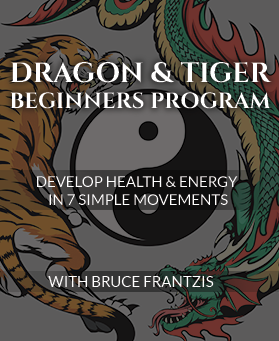We are now getting ready to enter the Year of the Tiger and there are several things that I think are helpful for you as an update. The first one is that we are nearing the end of winter, so within a month from now, during the winter period of time, the most valuable thing you can do is to rest so you have energy for the rest of the year.
This is so your system will regenerate, much like you leave a field fallow in the winter so in the spring it can grow again. Now that we’ve finished the bulk of the winter and we have less than a month left before the next phase starts, you want to start just like a person who has been very, very sleepy and is waking up, very slowly.
You want your body to continue to rest, but you want to slowly start waking it up so that, when the spring time comes, rather than it being a sudden jolt like a jolt of adrenaline, you gradually slide into the activity of spring. This is again a basic Chinese thought, a basic Taoist thought.
Along with that, we’ve also just had the Chinese New Year, the Year of the Tiger, and there are several things about this related to this time of the year. The first one is that one of the things the tiger is known for in China, besides being an extremely powerful animal is being very directly tied to your whole muscular skeletal system. This includes everything to do with your muscles and your ligaments, etc. Tigers are also known for their bones, which are extremely heavy.
Now, referencing tiger bones is used as a metaphor by tai chi masters. For example when someone hits you and if you really have tiger bones, then that means basically the person’s arm is going to bounce off you. If they hit you with their hand, their hand is probably going to hurt, but you’re not.
It’s the last month of the winter and you’ve just entered the Year of the Tiger. Because of this deep inside your bones and deep inside your bone marrow the energy is focused on sinking your chi. This is so it not only sinks through the tissues of your body but it literally starts sinking first into your bone matrix, the actual bone, and eventually into the marrow itself.
You would focus on the sinking of the chi with any practice you choose, for example standing Qigong or Tai Chi. this is very useful especially with standing postures because standing is a very good practice to do in the winter . They not only give you the rest you need but also help you have the transition between the rest period and the spring when your energy is going to start turning on like a light bulb.
During this period of time, during this next month, really focus on sinking your chi and see if you can get the feeling of your chi going beyond just the sense of your flesh and your blood but actually giving you some kind of sensation in your actual bones themselves.
This would be an excellent thing to do with this final phase of the winter. We’ll re-look at the subject of the tiger when we come to the actual springtime.




Thank you for the direction!
How does one sink the chi in the standing post chi kung? Isn’t this something that happens naturally over time or is there some else one should be doing? Or is it through worm stepping exercise that one sinks the chi? I found the latter somewhat useful for a feeling of heaviness but I’m not sure that means my chi is being sunk. Thank you.
great inspiration. just what i was looking for my practice.
thanks a lot!
Thank you, Bruce for this reminder to start slowly. Here, in California, Spring feels like it is already here and many people start too fast out of winter and now lots of colds and bad flu going around. In Tai Chi are there particular postures or breathing practices for this in-between-season time that you recommend for coming out of hibernation?
Fantastic advice, Bruce… just when I was feeling the same energy — the need to rest and sink and just “be” for the next month until the equinox rolls around. Thank you.
Also… I just gave my lecture on the bones of the human body tonight and the question was: what is the weight of the average adult skeleton? I didn’t factor in Tiger Taoist masters! Love the synchronicity.
Many blessings!
Still very wintery here in Ohio. I am looking forward to attending a workshop with Bruce at Menlo College in June. Since I am coming a distance, I would like to do the 5-day Double Palm Change, but I’m not sure if I should since I have no Ba Gua training.
The 3-day Five Elements workshop would be an option, though I am wondering if it goes three full days, or just partial days on either end.
The best of all worlds would be to do BOTH workshops, but I’m not sure I can get that much time off work. Any recommendations?
How does one sink the chi?
NV
How does this relate if you are living on the otherside of the world
where it is now a stinking hot Summer in Australia
what does the tiger do in summer besides eat & sleep and a few other things
I dont understand what it means: sinking the chi. How do I do that?
Hey schaeken, hey nvl,
i think there are better ones to answer your question of how to sink your chi, but as i waited a little for others to jump in, i figured i could try to clear things up a little:
1. if you can contact/feel your chi directly, you let it sink from above your head through your body into the ground to the edge of your etheric field and keep this flow happening as long as you practice, or even beyond that.
2. if you aren`t able to contact/feel your chi directly, there are intermediate steps you can take. bruce wrote about one of them in the “outer dissolving practice” or “standing practice”, which includes the downward sinking chi current. you can read and listen to this practice in his book, audio and video called “opening the energy gates of the body”.
in short: with your mind and intent, you let your awareness drop, layer by layer, from the crown of your head through your body downwards, till you reach the bottom of your feet. on every height of your body you should relax and have a sinking feeling…
(this is just a rough sketch! please have a look in the media mentioned above. or even way better: take a seminar with bruce, or anyone else you trust you knows how to do safe and profound chi practice) and there is energyarts.com as well.
Hi bruce.
In winter,if we practice the 3swings after standing should we bring the energy back down to the dantien with shou gong to store it,as this is neither mentioned in “energy gates” book(1st edition) or dvd.I feel that the 3swings are the best practice to instantly take away tension from just trying to relax at this time of year! many thanks
Hi Bruce
Thanks for the great advice and the fantastic books you have written. Yes, like the others I am also very curious how to sink the chi during standing qigong. Functionally, is sinking qi an outlet for one’s dissolved qi to be earthed?
By no means am I qualified to explain how to allow the Qi to “sink.”
(It probably cannot be explained.)
But it is the essence, the sine qua non, the raison d’etre of the internal art of Taiji.
So I just want to suggest that you continue to ask, “How do I sink Qi?”
Nevertheless I am foolish enough to start a dialogue, even in the face of Bruce Frantzis.
1. Learn everything you can about physical structure and alignment.
2. Study how to open energy gates.
3. Find a teacher who knows how to sink Qi.
4. Touch in with that teacher and listen to how the teacher sinks Qi.
5. Touch in with everyone that wants to also explore sinking the Qi.
6. Touch in with trees, branches, reclining rockers, doors, anything that will give resistance and rebound when you push it.
7. Meditate and allow yourself to surrender to nature.
8. Be patient.
sinking is important, no doubt but isn’t there also rising at the same time there is sinking?
sinking automatically causes rising of chi.
thanks for your reply